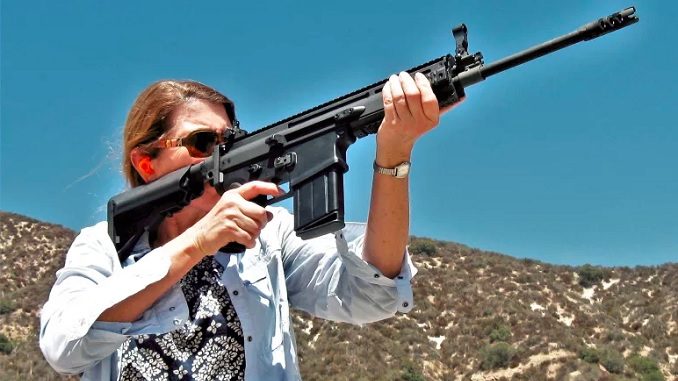
California first banned the sale of guns it calls assault weapons, including AR-15 style rifles, in 1989, then updated the restrictions in 1999 and again in 2016, The Wall Street Journal informs.
An accused shooter used just such a gun in April to attack a synagogue outside San Diego, killing one and injuring three. He bought it earlier this year in California where, despite the state ban, it is legal, according to law-enforcement officials.
The AR-15 style rifle that John Earnest, who has pleaded not guilty to all charges, is accused by police of using one of many models the firearms industry has come up with to skirt the regulations put in place by the seven states that outlaw semiautomatic weapons with certain features, which they refer to as assault weapons. These odd-looking semiautomatic rifles operate similarly to ones that are banned, including the ability to rapidly fire.
“They all shoot the same,” said Norris Sweidan, the owner of Warrior One Guns & Ammo in Riverside, Calif., where the walls are lined with AR- and AK-style rifles modified to be legal in the state. “These people that are passing the laws, how many of them do you think have actually shot a gun?”
In response to mass shootings, Democratic presidential candidates including former Vice President Joe Biden and California Sen. Kamala Harris say they want to renew the Federal Assault Weapons Ban that was in place from 1994 to 2004. Governors from Rhode Island and Virginia are pushing them too, the Journal writes.
But the proliferation of guns sold legally that operate nearly identically to banned models shows how difficult it can be to make firearm restrictions effective.
California State Sen. Steve Glazer, a Democrat who wrote 2016 legislation to block sales of a workaround, has been working on the issue since 1989, when he was a staffer for the legislator who led the fight for the first ban.
“You try to make progress every year, and so do gun manufacturers and their R&D departments,” Glazer said.
Mark Oliva, a spokesman for the National Shooting Sports Foundation, a trade group for gun manufacturers, said of the state laws, “They’re basing the bans strictly on cosmetic features that have no bearing on the operation or the function of the firearm.”

Be the first to comment